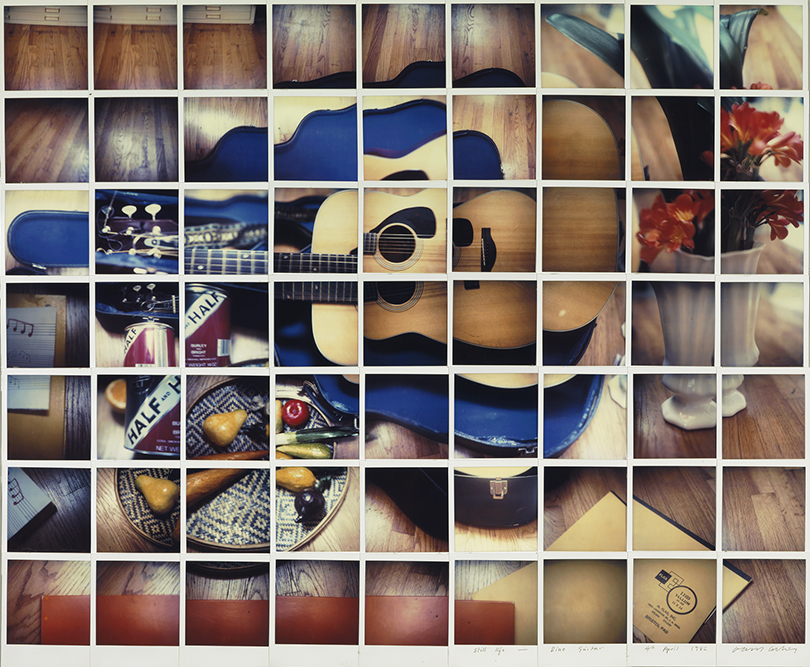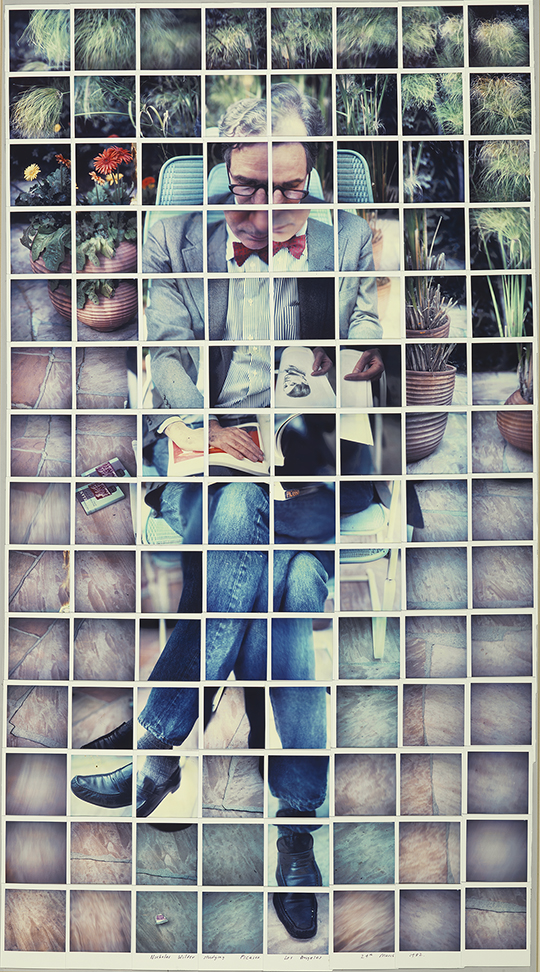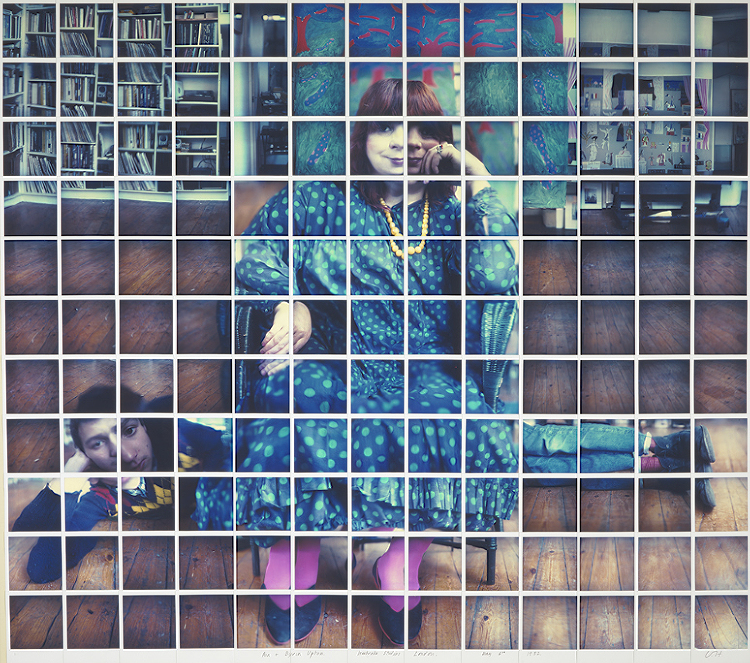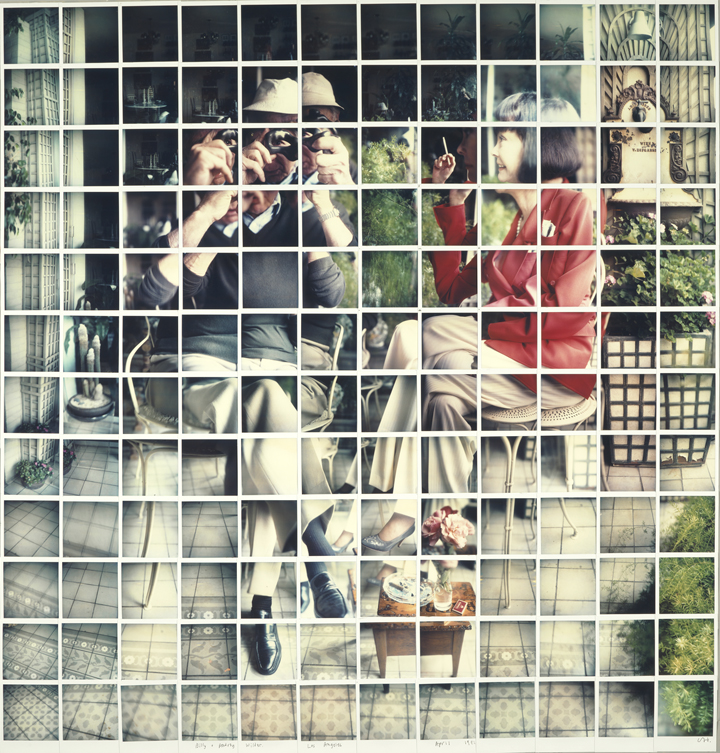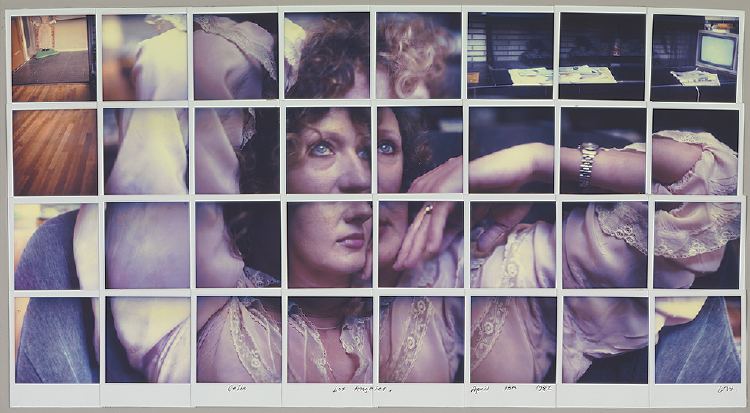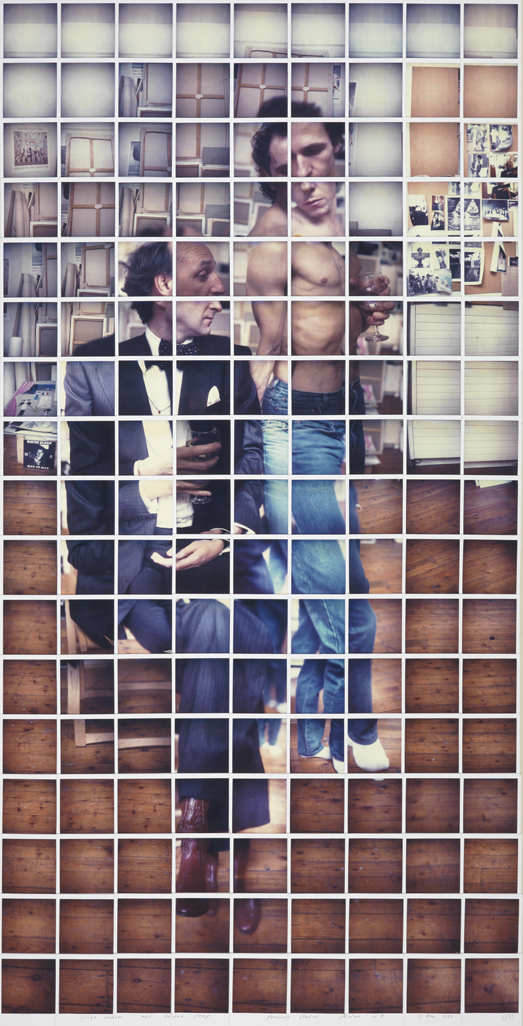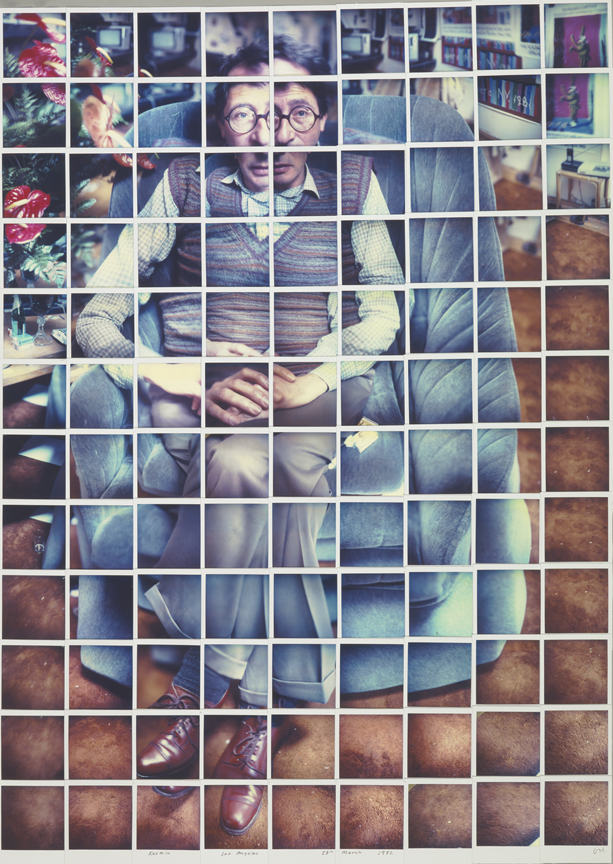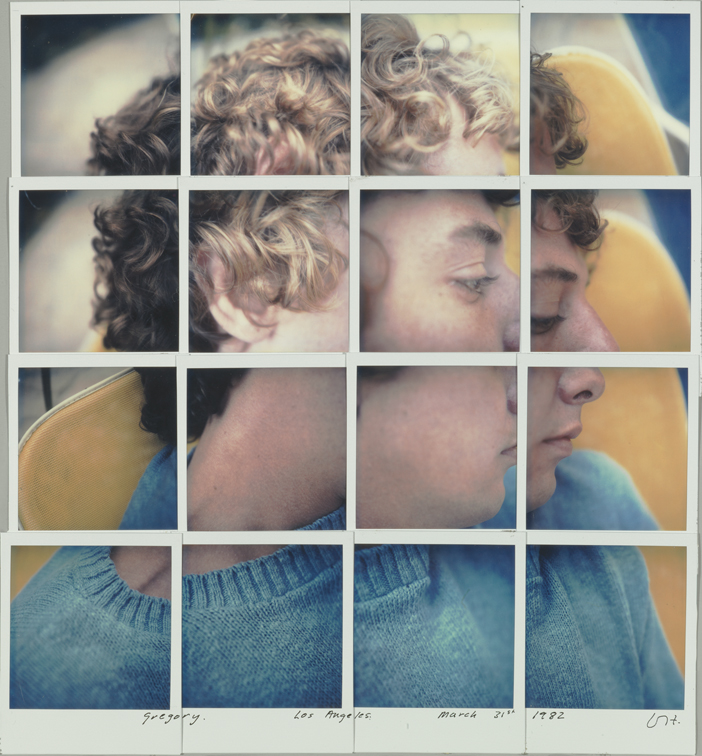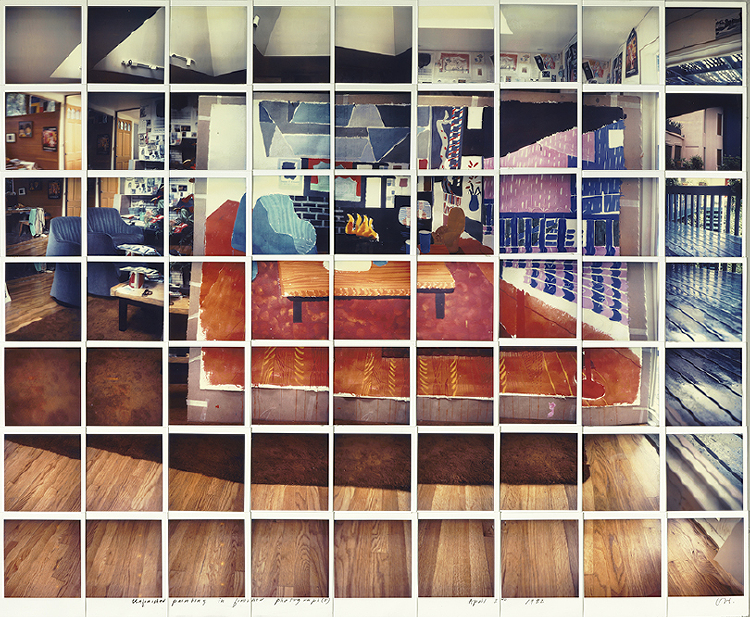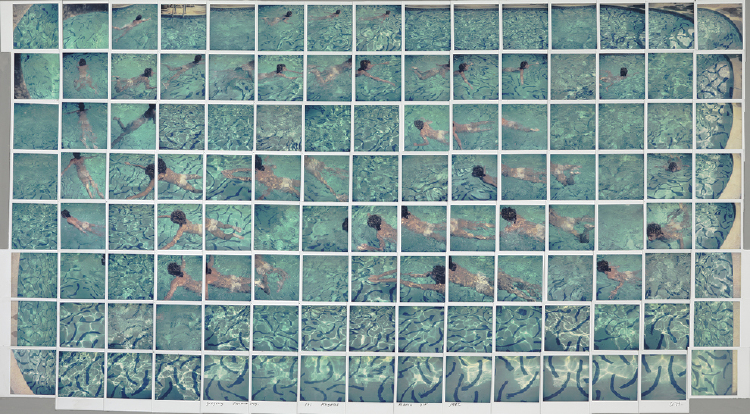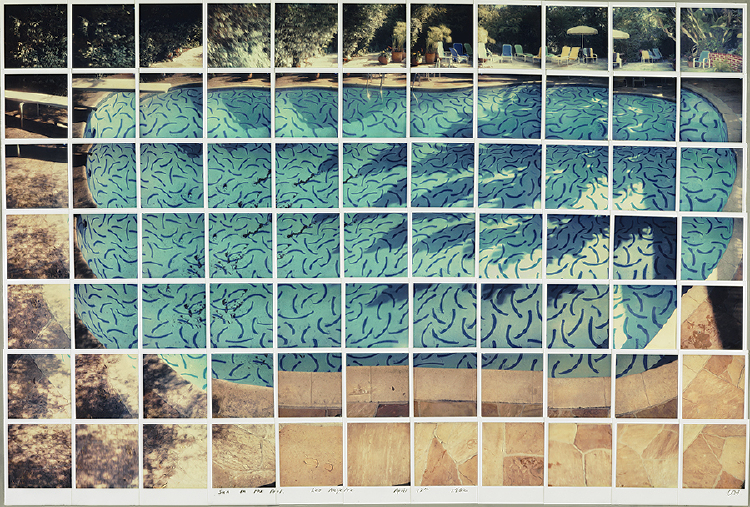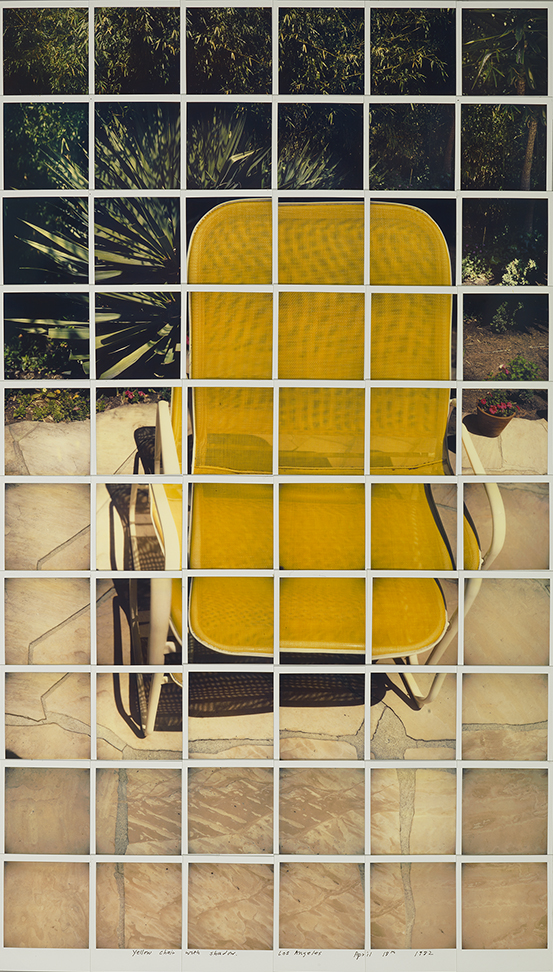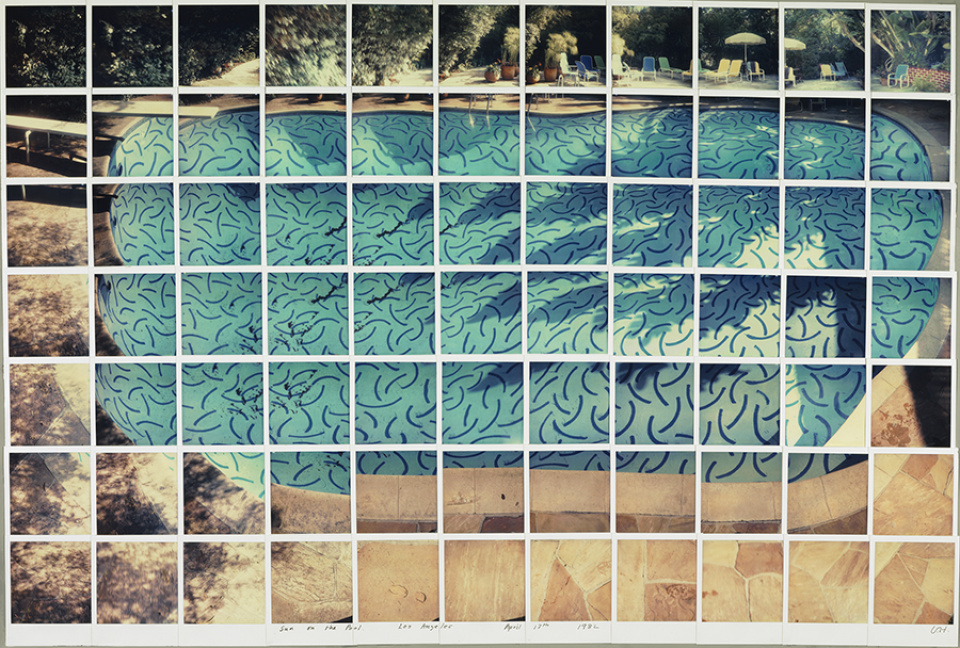
Composite Polaroids
Hockney has long been skeptical about photography’s capacity to make complex art—“I mean, photography is all right if you don’t mind looking at the world from the point of view of a paralyzed Cyclops—for a split second. But that’s not what it’s like to live in the world.” But when curator Alain Sayag convinces him to mount a show of his photographs at the Centre Pompidou in Paris, he has a breakthrough regarding how the medium might be used to create two-dimensional images with the perspectival sophistication of Cubist paintings. To document Hockney’s collection of personal photographs—which number in the thousands—Sayag suggests using a Polaroid camera for making “instant” prints. In short order, Hockney adopts this device to make new artworks: composite Polaroids showing multiple viewpoints in a single work of art. They are an innovation on his method, since the 1970s, of compositing multiple snapshots to plan paintings.
The main point was that you read it differently. It wasn’t just a photograph. It was abstracted, stylized: the ideas were based on Cubism in the way that it filters things down to an essence .... It worked so well that I couldn’t believe what was happening when I looked at it. I saw all these different spaces, and I thought: "My God! I’ve never seen anything like this in photography." Then I was at the camera night and day. I bought a thousand dollars of Polaroid film straight away! Within a week I’d done very complex things. I quickly discovered that I didn’t have to match things up at all. In fact, I couldn’t possibly match them, and it wasn’t necessary. The joiners were much closer to the way we actually look at things, closer to the truth of the experience.
Drawing with a Camera
Hockney makes 150 composite Polaroid works by May. In June, he has his first show of them, aptly titled Drawing with a Camera, at André Emmerich Gallery in New York.
The camera is a medium is what I suddenly realized. It’s neither an art, a technique, a craft, nor a hobby—it’s a tool. It’s an extraordinary drawing tool. It’s as if I, like most ordinary photographers, had previously been taking part in some long-established culture in which pencils were only used for making dots—there’s an obvious sense of liberation that comes when you realize that you can make lines!
Pompidou exhibition
The Centre Pompidou exhibition opens in July, and provides an overview of Hockney’s years of personal photographs as well as recent experimentation. Andy Grunberg, writing in the New York Times, notes the [NESTED]impact of the composite Polaroids in light of art history: “By photographing at different angles and distances, Hockney forces a number of perspectival disparities to appear .... Hockney has long admired Picasso; this is as close as he has come yet to paying homage by style.”
It’s as if the medium was fixed in this one way view of the world; photographers seemed to be exclusively concerned with subject matter, and they may not necessarily relate to form the way a painter does. I believe that only an artist’s approach will extend photography as a medium .... The Cubists were deeply involved in depicting reality more accurately than had been previously done, and I think they did in fact succeed. It seems strange that photography was not influenced by Cubism.
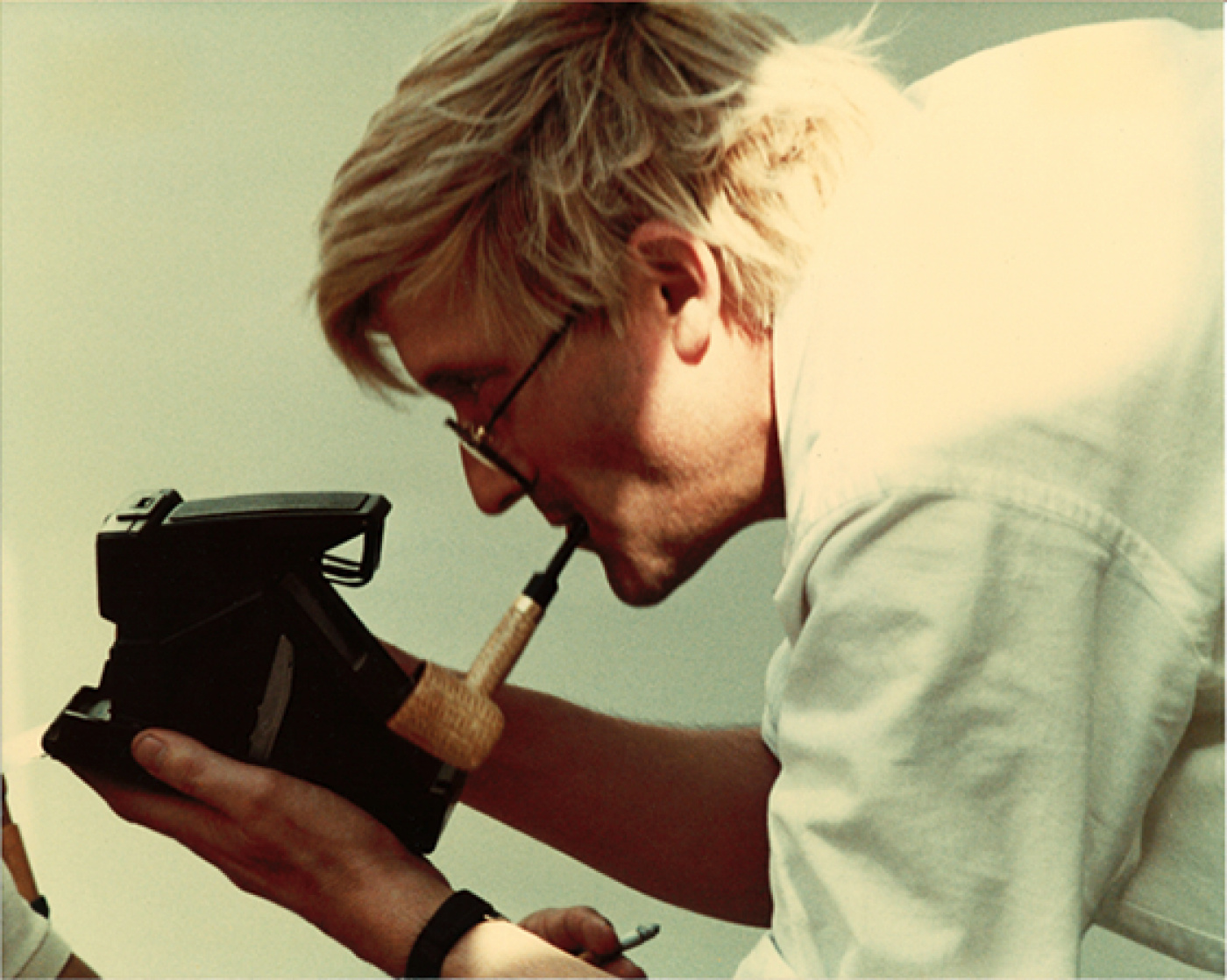
Polaroid to Pentax
The composite Polaroids, which start with images of Hockney’s house and garden, continue to develop as Hockney travels around the American West and visits Yorkshire in the U.K. Over the year, he varies the technical aspects of making them, [NESTED]replacing the Polaroid camera with the Pentax 110, a miniature interchangeable lens camera that allows him, among other advantages, to avoid white borders around the image. But its film requires a lengthier processing time, and increasingly he plans the arrangement of a photographic collage in notes and diagrams while waiting it out.
Grand Canyon
Hockney makes trips to the Grand Canyon with his Pentax 110, returning to the studio to map out two-dimensional photographic collages that attempt to give a sense of the lived experience of that spectacular geographic formation: “Memory became part of the process.”
These early collages of the Grand Canyon were really more like studies, you did them, just as you do a drawing sometimes, to teach yourself something; it doesn’t matter what they look like when they’re finished, that’s not why they were made. In this case, in retrospect, I realize I was training my visual memory, and this took a lot of time.
I’ve always loved the wide-open spaces of the American West. But I was never able to capture them in photography, to convey the sense of what it’s actually like to be there, facing that expanse—that incredible sense of spaciousness, which is somehow as elusive to ordinary photography as time is. I thought that among other things, this new kind of photography might be able to capture that sense of vast extent.
Exhibitions
Solo
- David Hockney: Drawings 1962–80 & Recent Prints, Nishimura Gallery, Tokyo, Japan (Feb 15–Mar 13).
- Drawing with a Camera, André Emmerich Gallery, New York, NY, USA (Jun 3–25).
- David Hockney: Drawing with a Camera, L.A. Louver, Venice, CA, USA (Jun 10–Jul 3).
- Composite Polaroids, Knoedler Gallery, London, UK (Jun 29–Jul 31).
- David Hockney photographe, Musée national d’art moderne, Centre Georges Pompidou, Paris, France (Jul 7–Sep 12); catalogue.
- Drawings and Photographs of China, Knoedler Gallery, London, UK (Nov 2–Dec 4).
- New Work, André Emmerich Gallery, New York, NY, USA (Dec 1982).
Group
- Eight Lithographs to Benefit the Foundation for Contemporary Performance Arts, Margo Leavin Gallery, Los Angeles, CA, USA (Jan 15–Feb 13).
- Painting: American – European, L.A. Louver, Venice, CA, USA (Aug 10–Sep 25).
Publications
Publications
- Carnegie International, 1982, Pittsburgh Museum of Art, Pittsburgh, PA.
- David Hockney: Photographe, Centre Georges Pompidou, Paris: Herscher and Centre Georges Pompidou.
- Hockney & Poetry, Michael Parkin Fine Art Limited, London: John Roberts Press.
- Important Paintings by Avigdor Arikha, Frank Auerbach, Francis Bacon, Balthus, Fernando Botero, Claudio Bravo, Lucien Freud, Alberto Giacometti, David Hockney, R.B. Kitaj, Antonio Lopez-Garcia, Pablo Picasso, Marlborough Gallery, New York.
- Instant fotografie, by Els Barents, Amsterdam.
- David Hockney Photographs, by David Hockney, London and New York: Petersburg Press.
- Sources and Experiments, by David Hockney, Houston, TX: Rice University.
- China Diary, by David Hockney and Stephen Spender, London: Thames & Hudson.
